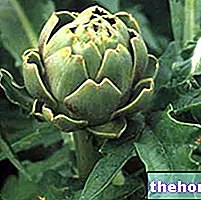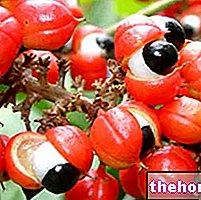What is phytotherapy?
The term "phytotherapy" derives from the Greek "phytòn", which means "plant", but at the same time also "creature": it is curious how this double meaning hides a profound concept. The root, in fact, derives from the verb “phyto” (generate and be generated), which indicates the process of fertility, of creation: we can see an evident parallelism that unites a plant to being, that is to man and to life.
Phytotherapy in history

Already in the Middle Ages, plants were used in the treatment of many ailments and to alleviate the suffering of the sick.
At one time, the current synthetic molecules did not exist (however, mostly derived from natural molecules): to cure oneself, plants were used and the gifts that nature offered to man were exploited, such as cultivated and spontaneous medicinal herbs. aware of the scientific reasons for efficacy, our ancestors also practiced phytotherapy, albeit in a simplistic way compared to today. Natural remedies were handed down from generation to generation, representing a wealth of experience in order to keep the body healthy. It is understandable that the therapy of medicinal plants was suitable for alleviating minor ailments, while for the most serious pathologies only faith, prayer or resignation remained.
Phytotherapy today
If natural medicine in general, and phytotherapy in particular, were abandoned for a short period, coinciding with the "boom" of conventional modern medicine, in recent years there has been the opposite phenomenon: the side effects caused by medicinal products syntheses have renewed interest in the "natural" approach. A good portion of the population has therefore registered greater attention and a marked awareness of phytotherapy.
Phytotherapy is the medical science that studies the correct use of medicinal plants and their derivatives, in order to treat or prevent various diseases and conditions of purely medical (drugs) or health (supplements) interest.
To define the nature and treatment of pathologies, modern phytotherapy refers to the same principles as conventional medicine based on evidence of efficacy, but using only remedies of plant origin. According to the "WHO, phytomedicines" are finished medicinal products, with labels, which contain as active ingredients exclusively plants or associations of plants in the raw state, in the form of preparations. They also include juices, gums, lipid fractions, essential oils and all other substances of this kind. "Often, these phytomedicines are in effect drugs of plant origin, because they are aimed at carrying out a" therapeutic action. Their effect depends on the nature and concentration of the pharmacologically active chemical constituents: although for each vegetable source characteristic active ingredients have been roughly identified, to which a certain therapeutic action is ascribed, in the vegetable source there are other extraordinary mines of complementary substances that they contribute to modulate its action (see concept of phytocomplex).
Just like synthetic drugs, phytotherapeutic remedies are taken in ponderal quantities, commensurate with body weight and not strongly diluted as "is the case with homeopathic remedies. One must never forget, however, a very important concept: phytotherapy should not be understood as a true "medicine that cures evil", but rather as a remedy to alleviate the ailment or an expedient to maintain the health of the body and spirit.
Applications
Phytotherapy can find an "important application by approaching" the use of conventional drugs: it is a good rule, however, to always follow the doctor's advice, to avoid unpleasant consequences of interference. To give an example, one should never assume St. John's wort (Hypericum Perforatum) with other medicines, because it could modulate the absorption of the drugs taken. This is why phytotherapy is also the competence of the doctor, as well as the herbalist. Competence and responsibility are two indispensable qualities for a doctor, even in the phytotherapeutic field, because, sometimes, it is the doctor himself who depends on people's life and health.
To make the concept even clearer, it must be emphasized that the synthetic drug, the protagonist of conventional medicine, often limits itself to treating the symptoms without acting on the causes; grass, a leading figure in the phytotherapeutic panorama, and alternative medicine in general, instead aim to alleviate the underlying cause of the disorder, taking care of the individual as a whole and his health at 360 degrees (importance of a correct diet and lifestyle, meditation, physical activity, etc.). Probably, it is precisely for this reason that the man of the third millennium has approached phytotherapy and complementary or unconventional medicines, in order to eradicate the disturbance to its foundations.
Self-medication
The rediscovery of phytotherapy, in the last two decades, has led scholars to analyze medicinal plants with a more critical and careful eye: despite the fact that herbal remedies have existed since the dawn of life, in some cases a scientific certainty has not yet been reached. that justifies the therapeutic effects demonstrated by empirical use and popular tradition. Many people choose self-medication with herbs with supposed therapeutic properties: in doing so, they commit the error of relying on personal, philosophical and ideas lacking in scientific basis, which as such do not lead to any concrete result, except, sometimes, to the worsening of the pre-existing situation.
Therefore, the use of phytotherapy to support conventional medicine is correct, but always under the advice of a competent and expert person, because even plants can hide unwanted side effects.
Select plant Fir Acacia Acerola Sorrel Yarrow Yarrow Yarrow Aconito Adatoda Garlic Agnocasto Agrimonia Alchemilla Alkekengi Aloe Altea Witch Hazel Ammi or Visnaga Pineapple Andrographis Anemone Pulsatilla Angelica Anise Star Anise Japanese Star Anise Bitter Orange Bitter Areca Arnica Harpagophytum Arpagophyte Artemisia Asteragus Basil Asparagus Asparagus Peruvian Asparagus Asparagus Asparagus Hawthorn Boldo Borage Shepherd's Purse Boswellia Bucco Butea superba Cocoa Coffee Cajeput Calamus Calamus Marigold Camedrio Chamomile Roman Chamomile Camphor Cinnamon Ceylon Maidenhair Capuchin Artichoke Cardamom Cardiac Thistle Asian Thistle Carvi Cascara Cassia Catecu Catha Cabbage Celandine Chicory Centaurea Cinnamon Cypress Celandine Chives Cypress Coca Cola Colchico Combreto Condurango Comfrey Coriander Cranberry Barberry American Chrysanthemum Cumin Turmeric Damiana Digital Dioscorea Drosera Dulcamara Dunalilella Echinacea Eder a Ephedra Elenio Eleutherococcus Helichrysum Evening primrose Horsetail Alfalfa Erica Euphrasia Erisimo Escolzia Eucalyptus Farfara Farfaraccio Calabar bean Fenugreek Fennel Phytolacca Frangola Ash Fumaria Japanese Mushrooms Galega Ganoderma lucidum Garcinia Cambogia Mulberry Gentian Broom Ginkgo Ginkgo Guipana Guipana Gynestra Ginkgo Hibelia Gymnasium Hibiscus Guarulp St. John's Wort Horse Chestnut Ispaghul Hyssop Jaborandi Kava kava Konjac Laminaria Cherry Laurel Lavender Lemongrass Lespedeza Lovage Icelandic Lichen Lemon Flax Lippia Licorice Lobelia Hops Maca Marjoram Maize Mallow Manna Marrubio Marrubio d "water Matè Melaleuca Meliloto American Lemon balm Myrtle Myrama Walnut Nutmeg Walnut vomica Olive tree Meadowsweet Ononide Opuntia Oregano Orthosiphon Nettle Poppy Papaya Parietaria Feverfew Passiflora Chilli Perilla Periwinkle Phyllanthus Plantain Picrorhiza Pilosella Pino Pisci dia Podofillo Polygala Grapefruit Parsley Psyllium Pueraria mirifica Butcher's broom Pygeum Quassia Oak Rhubarb Ratania Rauwolfia currant Castor bean Rhodiola Rosehip Rosemary Rue Willow Sarsaparilla Sage Elderberry Sassafras Sedum Ergot Senna Serenoa Repens Soybean Solidago Tansy Taraxus Tamarind Tamarind Tamarind Tamarind Tamarindo Ursina Valerian Vanilla Mullein Verbena Veronica Viburnum Vinca Pansy Mistletoe Vine Withania Yohimbe Saffron Ginger Pumpkin Select disease Juvenile Acne Rosacea Tinnitus Tinnitus Aerophagia Tendon Affections Afonia Aphthae Algias Functional Halitosis Breastfeeding Allergy Anemia Anguish Anxiety Arteriosclerosis Asthrosis Asthrosis Arthritis Arthritis Men Sex Woman Blepharitis and Conjunctivitis Eye bags Bronchitis Gallstones Kidney stones Salivary stones Baldness Androgenetic Candida Fragile hair Caries Headache Cellulitis Motion sickness Cystitis C limaterioCholecystopathy High cholesterol Ulcerative colitis Colonoscopy Bruises Hematomas Convalescence Couperose Depression Dermatitis Diaper rash Diabetes Diarrhea Erectile dysfunction Dyslipidemia Dysmenorrhea Dyspepsia Vision disturbances Haemorrhoids Epistaxis Herethism Cardiac Fever Fibromyalgia Intestinal disease Hypertension Hypertension Hypertension Hypertension Hypertension Gellomyalgia Flatulence Gastro-nitis Phlebitis Laryngitis Renal lithiasis Toothache Sore throat Thinness Menopause Meteorism Mononucleosis Alzheimer's disease Crohn's disease Nausea Vomiting Obesity Dark circles Onychomycosis Osteoporosis Dry skin Periarthritis Piorea Low blood pressure Prostatitis Psoriasis Cold Breast fissures Anal fissures Gastroesophageal salinitis Rhinopharyngeal Premenstrual Syndrome Sinusitis Quit smoking Overweight Fatty liver Constipation Stomatitis Stress Cough High triglycerides Ulcer in Burns Nails Brittle flashes Heat Warts Dizziness Properties herbal Tanning Abortive adaptogenic Aphrodisiac bittering analgesic anesthetic anorectics analgesic antacid anti-allergic anti-asthmatic Antibiotic catarrh Anticellulitiche anticonvulsant Antidiaforetiche antidiarrheal edematous anthelmintic antiemetic Antiemorroidarie antiphlogistic Antiidrotiche Antinevrotiche Antioxidants antipyretic antirheumatic antiscorbutic Antiseptic antispasmodic anti-uric Aperitive Flavoring Astringent Balsamic Bechiche Capillarotrope cardiotonic Carminative Cathartic Caustics Healing Cholagogues Choleretic Dyes Decongestants Deodorants Purifying Diaphoretic Cleansers Disinfectants Detoxifiers Thirst quenchers Diuretics Exciting Emetics Emmenagogues Emollients Hemostatic Energetics Hepatoprotectors Expectorants Eupepticans Photosensitizers Galactosensitizers Galactofore tensive Hypnotic Hypoglycemic Hypotensive Irritants Laxative Soothing Narcotic Nerves Nutrients Odontalgic Pectoral Purgative Revulsive Remineralizing Refreshing Rubefacient Scialagoghe Sedative Soporifugas Sneezing Stomachic Stomatics Narcotic Vascular Tightening Vascular Vascular Snatchers























-nelle-carni-di-maiale.jpg)




